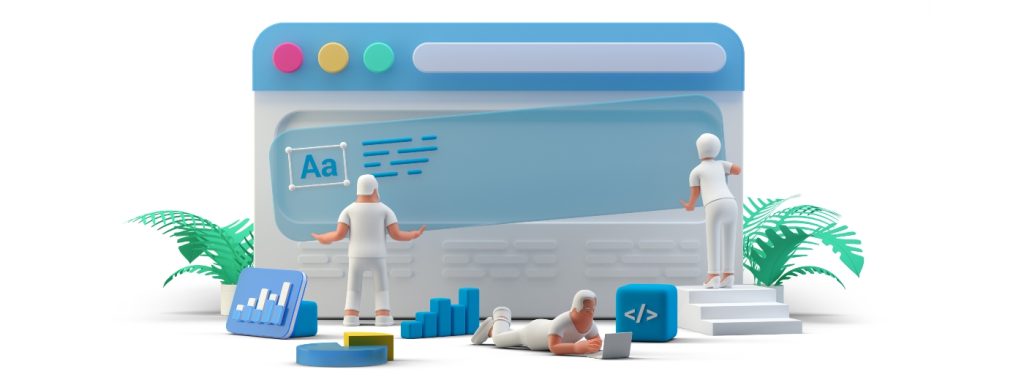How To Streamline Web Design Workflows – Expert Strategies
In today’s digital age, a company’s website often serves as the face of its business. Web design is not just about aesthetics; it’s also about how a website functions. It encompasses a variety of elements, including layout, content, and navigation. When done right, web design enhances user experience, helping you to build trust and connect with your audience. It’s essential to ensure that visitors can find what they’re looking for with ease.
Understanding Web Design Workflows
A workflow in web design is like a well-oiled machine with multiple components working together. It’s the process through which a project moves from conceptualization to launch. It involves a blend of creative and technical tasks such as gathering requirements, creating mockups, coding, testing, and reviewing.
Typical Stages In Web Design Workflows
Web design workflows can be intricate, but typically involve the following stages:
- Discovery And Research: Understanding the client’s goals, target audience, and competitors.
- Planning: Outlining the project’s scope, setting timelines, and allocating resources.
- Design: Crafting the visual elements, including layout, color schemes, and graphics.
- Development: Writing and optimizing the code that brings the design to life.
- Testing And Review: Ensuring the website is functional, responsive, and free of bugs.
- Launch And Maintenance: Making the website live and keeping it updated and secure.
Working through these stages meticulously ensures that the end product is not only visually appealing but also robust and user-friendly.
Common Challenges Faced In Web Design Workflows
Web design workflows have their challenges. Some common challenges include:
- Communication Breakdown: When team members and clients are not in sync, this can lead to misunderstandings and delays.
- Scope Creep: When the project’s requirements keep changing, it can cause timelines to spiral out of control.
- Resource Constraints: Sometimes, the necessary skills or tools might not be readily available.
- Technical Issues: These can range from coding errors to compatibility issues with browsers.
Awareness of these challenges is the first step in overcoming them. Implementing a streamlined workflow is key to turning these hurdles into stepping stones for success.
Strategies For Streamlining Web Design Workflows

In the dynamic world of web design, streamlined workflows are essential for efficiency and effectiveness. It empowers you to deliver exceptional results with greater efficiency and less stress.
Planning And Defining Clear Goals
First and foremost, planning and defining clear goals is critical. Setting SMART UI and UX goals—specific, measurable, achievable, relevant, and time-bound—establishes a strong foundation for your project. Along with this, defining the scope and setting milestones enables you to track progress and ensures that the project stays on course.
Utilizing The Right Tools And Technologies
Within the framework of streamlining your web design workflows, utilizing the right tools and technologies is paramount. Ensure your team has access to high-quality web design tools that cater to the specific needs of your projects, be it for crafting stunning visuals or intricate layouts.
To foster seamless collaboration among team members, there are many tools available that facilitate communication and project management, ensuring that all team members are aligned.
File conversion tools are also highly useful. A Word to PDF Converter, for instance, is invaluable when you need to convert documents such as design briefs or content drafts into a more shareable or non-editable format.
Establishing Effective Communication Channels
Effective communication is another cornerstone of streamlined workflows. Regular updates and role clarification are key to keeping team members informed and engaged. Equally important is client communication. Strive to keep clients informed and engaged, but steer clear of overwhelming them with technical details.
Implementing Reusable Components And Templates
Another game-changing strategy is the implementation of reusable components and templates. By creating a design system, you standardize design elements, which leads to consistency and faster production. Furthermore, libraries and frameworks can be real time-savers. By leveraging these resources, you expedite development without compromising on quality.
Task Automation
Task automation is a valuable asset in streamlining web design workflows. Consider harnessing tools that take over repetitive and mundane tasks. This will not only save you time but also increase accuracy and consistency. For instance, there are tools that can help you automate the optimization of images, minification of code, and other tasks that would otherwise be time-consuming if done manually.
In addition, embracing automation in integrating and deploying updates is a boon. It ensures that updates and changes are executed smoothly and promptly, enabling a more dynamic development process.
Time Management Techniques
Lastly, don’t neglect the art of time management. Employ prioritization techniques like the Eisenhower matrix to discern urgent and important tasks. Time tracking and analysis are also vital, as they help you gauge how time is spent and pinpoint areas that warrant improvement.
Incorporating these strategies into your web design workflows will improve efficiency and productivity.
Overcoming Potential Roadblocks
Even with the best-laid plans, roadblocks can crop up when you’re streamlining your web design workflows. Some common roadblocks include resistance to change, budget constraints, lack of expertise, and information silos.
Resistance to change is particularly prevalent, as people often find comfort in familiarity. Budget constraints can limit your access to the tools and resources needed to streamline your workflow. Lack of expertise may hinder the implementation of new strategies, while information silos can stifle communication and collaboration.
While these roadblocks may seem daunting, they are by no means insurmountable. With the right strategies, you can navigate through them effectively and keep your workflow streamlining process on track.
- Fostering A Culture Of Adaptability: Encourage your team to be open to change by providing support to ease the transition.
- Upskilling And Training: Invest in the development of your team’s skills. A more skilled team is better equipped to handle new strategies and technologies.
- Resource Optimization: Make the most of what you have. There are often cost-effective tools and resources available that can significantly enhance your workflow without breaking the bank.
- Breaking Information Silos: Implement practices that promote communication and collaboration. This could be as simple as regular team meetings or using collaboration tools.
Implementing these strategies to overcome roadblocks paves the way for a smoother and more efficient web design process, enabling your team to thrive in the face of challenges.
Conclusion
As you strive to streamline your web design workflows, remember that this is an evolving process. The digital landscape is ever-changing, and what works today may not be as effective tomorrow. Continual learning and adaptation are paramount.
By embracing change and fostering innovation, you’re not just streamlining your workflow but creating opportunities for creativity and success.



Leave a Reply